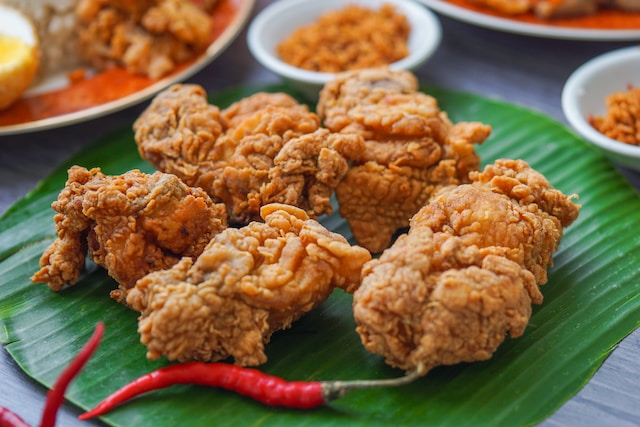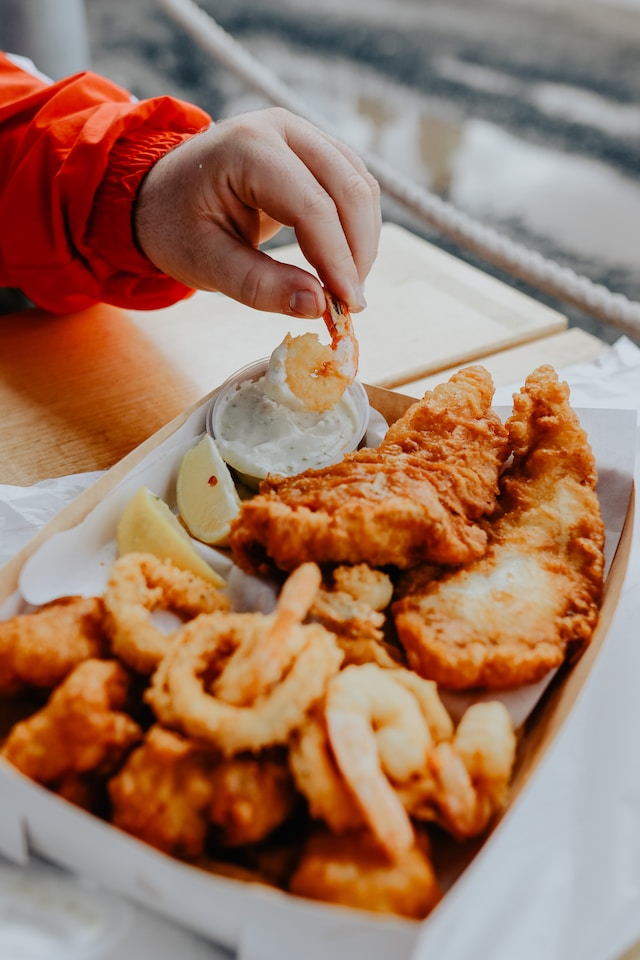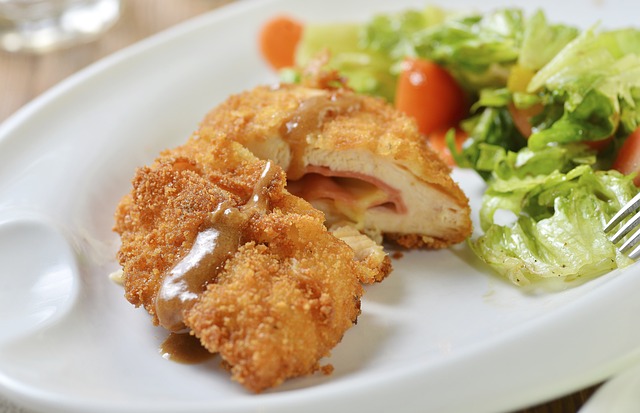
As a self-proclaimed foodie, I must admit that I have a soft spot for fried foods. There’s just something about that crispy exterior and succulent interior that makes my taste buds dance with joy. However, I also recognize that fried foods have gotten a bad reputation over the years, often being labeled as a prime contributor to heart disease, obesity, and other health problems. So, I decided to do some digging and find out the truth about fried foods. Here’s what I discovered:
The Positives of Fried Foods
When it comes to indulging in our favorite guilty pleasure, fried foods, we often focus on the negatives. But did you know that there are actually some benefits to consuming these delicious treats in moderation? Here are some of the most significant positives of fried foods:
The Texture – It’s hard to deny the appeal of that crispy, crunchy texture that comes with fried foods. Golden and crispy on the outside and succulent on the inside, the texture of fried food is unbeatable.
Taste – Fried foods are undeniably delicious. The frying technique seals in the flavor, creating a mouth-watering taste that just can’t be replicated with other cooking methods.
Versatility – Fried foods can be cooked in a variety of ways and can be made with virtually any ingredient, from chicken and fish to vegetables and even ice cream.
Sharing experience – Fried foods are a social food that can be enjoyed with others. Whether it’s a bucket of fried chicken at a family picnic or a plate of fries and onion rings at a sports bar with friends, fried foods bring people together.
Emotional effect – Fried foods have been known to have an emotional appeal to people. It has the ability to make people feel happy, comfortable, and satisfied. As with any comfort food, the experience of eating something fried can be both satisfying and calming.
While you don’t want to overindulge in fried foods, there are some benefits that can’t be denied. By choosing healthier frying options and eating in moderation, you can still enjoy the taste and texture of fried foods without sacrificing your health.
The Downsides of Fried Foods
While fried foods have undeniable positive qualities, there are also several downsides to consider. Here are some of the most significant:
High in Fat & Calories – One of the main concerns with fried foods is their high fat and calorie content. Foods that are deep-fried or pan-fried are typically immersed in oil, which can increase their fat and calorie content significantly. This can lead to weight gain, high cholesterol, and other health problems.
Increased Risk of Heart Disease – The high fat content in fried foods can also increase your risk of heart disease, as it can lead to the buildup of plaque in your arteries. This can restrict blood flow to your heart and put you at higher risk for heart attacks and other cardiac events.

Acrylamide Content – When certain foods are fried at high temperatures, they can develop acrylamide, a potentially harmful chemical compound. Acrylamide has been linked to an increased risk of cancer and other health problems.
May Increase Inflammation – Some studies have suggested that eating fried foods regularly may increase inflammation in the body. Chronic inflammation has been linked to a variety of health problems, including heart disease, diabetes, and certain types of cancer.
May Lead to Digestive Issues – Eating fried foods can also cause digestive issues, as they can be difficult for your body to digest properly. This can cause bloating, gas, and other uncomfortable symptoms.
Finding a Balance
So, how can we enjoy the occasional fried indulgence without sacrificing our health? The key is finding a balance and making smart choices. Here are some tips to keep in mind:
Choose healthier frying options:
- Use vegetable oils such as olive oil or canola oil instead of animal-based fats like lard or butter.
- Use healthy frying techniques, such as air-frying or shallow frying in a nonstick pan.
- Avoid deep-frying as much as possible, as this method typically involves submerging the food in oil.
Mind your portions
- It’s important to remember that portion control is key when it comes to fried foods. If you’re going to indulge, make sure to limit your serving size to a reasonable amount.
- Try sharing a dish with friends or family, or choose a smaller side order of fried foods rather than a large entree.
Add some balance to your meal:

- Balance out your meal by including plenty of whole, nutritious foods along with your fried indulgence.
- Try pairing your fried food with a salad or some grilled vegetables, or opt for a side of roasted sweet potato fries instead of regular fries.
Be mindful of frequency
- While it’s okay to enjoy fried foods on occasion, try to limit your consumption to once or twice a week at most.
- If you find yourself craving fried foods frequently, try to find healthier alternatives that still satisfy that craving, such as baked sweet potato wedges or air-fried chicken tenders.
Fried foods can be a delicious indulgence when enjoyed in moderation. By making smart choices, such as opting for healthier frying options and balancing out your meals with nutritious foods, you can still enjoy the taste and texture of fried foods without compromising your health.
Tips for Cooking Fried Food
If you’re planning to indulge in some fried food, it’s important to choose healthier frying methods and make smart cooking choices. Here are some tips and tricks to keep in mind:
Select the right ingredients: Choosing high-quality ingredients is crucial for successful fried food preparation. The key is to select fresh produce and the right type of meat and fish.
Prepare the ingredients: Ensure that all ingredients are cleaned, dried, and cut into the appropriate size and shape. This will help them cook evenly, reducing the risk of undercooked or overcooked food.
Seasoning: Seasoning is integral to bring out the best flavors in fried food. Use a range of herbs and spices to enhance the natural flavors of your fried food.
Coating: Coating is critical in fried food preparation to provide that crispy outer layer. Ensure that the coating mixture is well-combined and fully coats the ingredients to enhance their flavors.
Preheating: Proper preheating of the frying oil is necessary to ensure that your food cooks evenly and attains the desired crispy texture. Use a thermometer to check the temperature and adjust accordingly.

Choose the right oil: Different oils have different smoke points, which can affect the taste and texture of your fried food. Olive oil, for example, has a low smoke point and can burn easily, while canola oil has a higher smoke point and is better suited to deep-frying. Other healthier oil options include avocado, grapeseed, and peanut oil.
Don’t overcrowd the pan: When frying food, it’s important not to overcrowd the pan. This can cause the oil to cool down and lead to soggy, greasy food. Give your food plenty of space to cook evenly and maintain the right temperature.
Use the right temperature: The temperature of the oil is crucial when frying food. If the oil is too hot, it can burn the food and create harmful chemicals. If it’s too cool, your food will absorb more oil and become greasy. The ideal temperature for most fried foods is between 350 and 375 degrees Fahrenheit.
Use a thermometer: To ensure the right temperature, use a thermometer to check the heat of the oil. This will help you avoid overcooking or undercooking your food and keep it crispy and delicious.
Appropriate frying equipment: The type of equipment you use for frying also plays a significant role in achieving superior fried food. Ensure that your frying pot or pan is compatible with your cooktop and use the correct oil to achieve the desired results.
Timing: Timing is everything when it comes to frying. Overcooking or undercooking can lead to an unappetizing texture and spoil the flavor. Monitor the cooking time closely and remove the food from the oil at the right moment.
Drain excess oil: After frying, drain any excess oil from your food by placing it on a paper towel or rack. This will help to reduce the overall fat content and ensure that your food stays crispy.
By following these prepping tips, you can ensure that your fried food is always savory, crisp, and delicious. Don’t forget that moderation is key to enjoy the benefits without jeopardizing your health.
